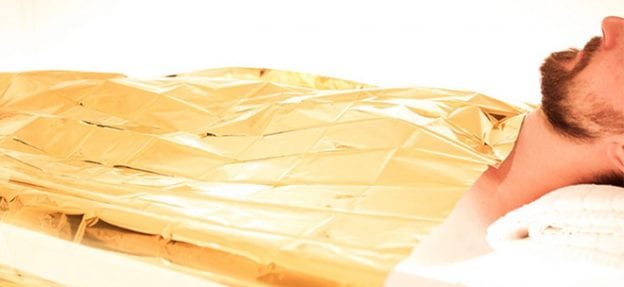
Temperature increase and overload of antibiotics
Hyperthermia, or raising the body's temperature to help the immune system fight infection, is a therapy that can be used to fight borrelia burgdorferi, the bacterium that causes Lyme disease.
There is two main reasons why hyperthermia works well for the Lyme disease. The obvious reason is that whole-body fever is beneficial for killing bacteria - in this case, Borrelia and co-infections (especially those that are bacterial). It is a known fact that borrelia bacteria die at 39°C so for maximum results the core body temperature should ideally reach this heat or higher. At the St. Georg Klinik in Germany they use extreme hyperthermia. The patient is only exposed to this higher heat for 10-20 minutes at most, so it is important to get above 39 degrees so that the body is warm enough to kill the Borrelia, their co-infections and release the cysts. As Borrelia and other micro-organisms flee from heat, antibiotics in the bloodstream aid in the destruction of the microbes.
The second reason is that total body hyperthermia overloads the antibiotics. The day before the hyperthermia, it is advisable to irrigate the colon. A colon hydrotherapy the morning of hyperthermia ensures that there is little food or waste in your digestive tract.. Hyperthermia together with a drip of antibiotics at the same time will result in As the body temperature rises, the body will look for glucose to feed the cells and the brain, and all it will find is antibiotics, so it will attract antibiotics to cells, tissues and barriers that antibiotics are not usually able to penetrate.
There is a 1996 study, entitled Antibiotics and increased temperature against borrelia burgdorferi in vitro, by a team of Austrian researchers, which was based on the fact that ?The persistence of late Lyme disease despite antibiotic treatment has stimulated the search for other therapeutic means. Treponema pallidum, another spirochete, causes syphilis, which has a similar spectrum of manifestations, including skin lesions and chronic multi-organ involvement. In the pre-penicillin era, benign tertian malaria alone and in combination with Salvarsan or bismuth was reported to cure neurosyphilis. Malario-therapy for Lyme disease has recently been discussed in this context. The mode of action of malarial therapy has not been elucidated so far; however, it has been attributed to immunological mechanisms. The rapid improvement of clinical symptoms with ceftriaxone in 2 of our patients with febrile neuroborreliosis led to the initiation of the presented study. The effect of increased temperature and anbitotics on borrelia burgdorferi in vitro is shown here.€
This experiment showed that rising temperatures affect growthmorphology, morphology, motility, metabolism and virulence of various bacteria and Treponema species. Spirochete growth in Lyme disease is delayed at 39°C and does not occur at 40°C and above.
These data could suggest that different strains of borrelia may affect different parts of the body depending on their temperature.
Heat-resistant strains would therefore preferentially affect warm regions of the body (e.g. neuroborreliosis), while heat-sensitive strains would show tropism for regions of the body with lower body temperature (e.g. skin).
The reduction of the growth of certain strains of borrelia burgdorferi by increasing temperature in vitro suggests that increasing body temperature may be beneficial during antimicrobial treatment of Lyme borreliosis.. This may be particularly important for infections in tissues and compartments where high concentrations of antibiotics are difficult to achieve. Clinically, a variety of exogenous or endogenous pyrogens other than benign tertian malaria could be used to induce artificial fever. Therefore, controlled clinical trials seem warranted to establish the efficacy of fever alone or as an adjunct measure during antibiotic treatment of antibiotic-refractory late Lyme disease.
At Biosalud Day Hospital, oxythermia (administration of oxygen at the same time as the hyperthermia itself) is practised, and at the same time an immune system activating serum is administered which further enhances the curative effect. This is the most advanced method for many pathologies, such as chronic Lyme.


2 thoughts on “La hipertermia para combatir la borrelia burgdorferi”
I am infected by a tick and I have a lot of pain in my head, would it be a good idea to undergo hyperthermia?
Good morning, the prescription of a treatment can only be made after the examination of analytical and clinical tests, therefore, we cannot offer an answer on this line to the treatment that could be appropriate in your case. Regards
Comments are closed.